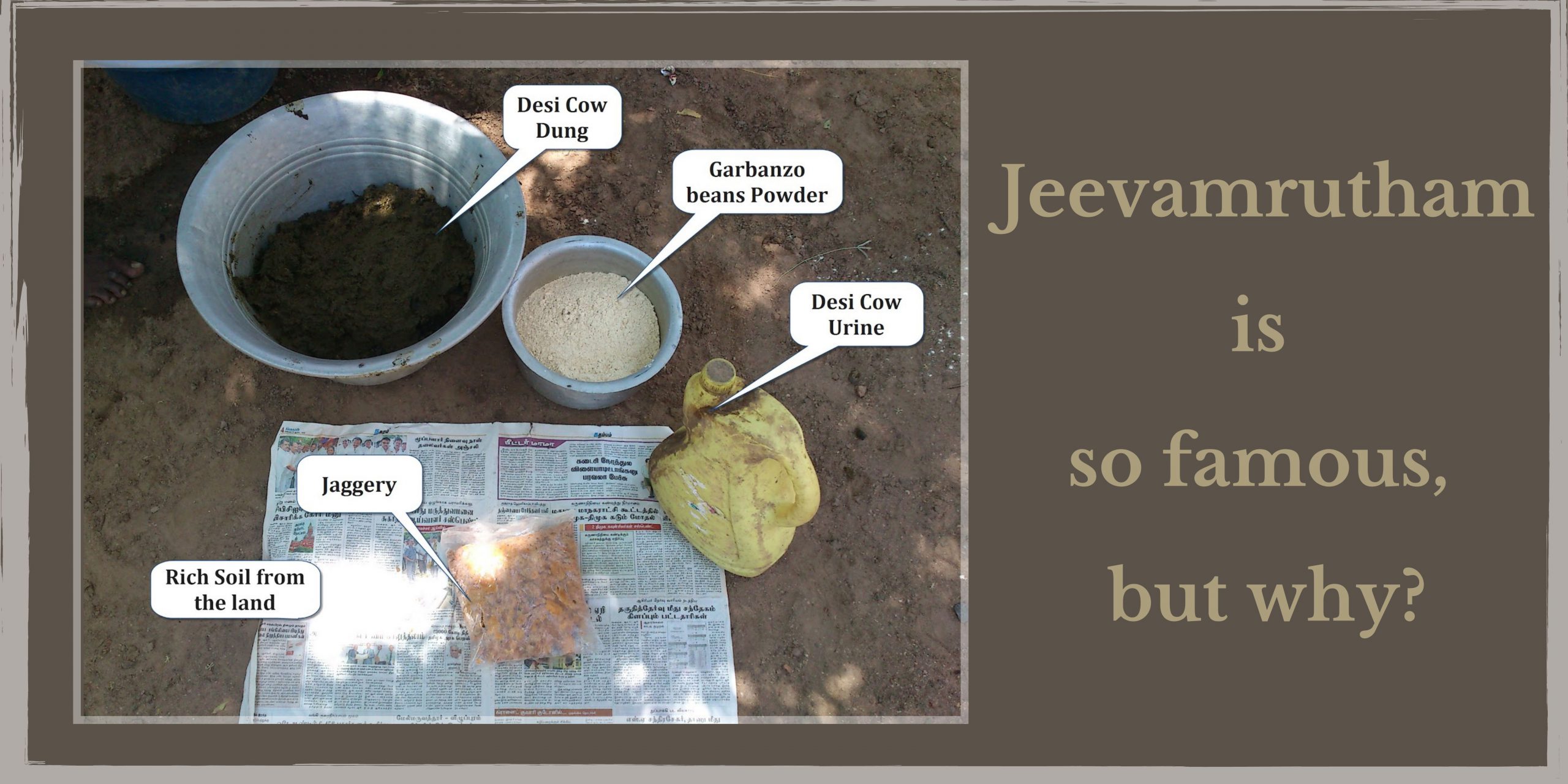
Jeevamrutham is so famous, but why?
Jeevamrutham preparation, dosage and its uses are made clear in great detail in this post. Jeevamrutham is an organic soil fertiliser and plant growth promoter that is high in microorganisms that aid in improving soil fertility and agricultural production. Genuine desi cow dung, jaggery, desi cow urine, besan flour, and healthy soil are used to make it. When Jeevamrutham is sprayed on plants, the microbes that play an important role in farming enhance soil health and aid plants take up nutrients from the soil more quickly. As a result of its high concentration of microorganisms, Jeevamrutham, a mixture of desi cow dung and desi cow urine, is believed to help plants develop quicker and produce better yields. Beneficial bacteria and microorganisms are abundant in desi cow dung, making it an excellent fertiliser for plants and vegetables. In short, Jeevamrutham is a natural, low-cost, fermented microbial concoction that enriches the soil, aids microorganism development, and enhances soil mineralization. Therefore Jeevamrutham usage is highly recommended in organic farming. There are also various types of Jeevamrutham.
Jeevamrutham Preparation
The following are the elements needed to make Jeevamrutham: 10 kilogrammes of cow dung (local cows), 7 litres cow urine (native cows), 1 kilogramme of jaggery, Make 1 kilogramme of flour from sprouted gram for optimal results from Black gram, Bengal gram, or green gram. Chemical fertiliser and pesticide-free soil, and 200 litres of chlorine-free water. The use of Jeevamrutham involves helping plant roots absorb the nutrients as Jeevamrutham is nutrient-rich. The following are the stages involved in preparing Jeevamrutham: Fill a large plastic barrel halfway with cow dung, urine, jaggery, flour, and soil. Blend them thoroughly and use a bag to cover the barrel. Daily, mingling the mixture in a clockwise motion with a piece of log is required. Carbon monoxide, carbon dioxide, ammonia, and methane are all created during fermentation and these gases are allowed to escape through the sack. It will be ready to use in two days during the summer and three days during the winter. The Jeevamrutham made in this manner should be used up within 5 days.
How to use Jeevamrutham?
Jeevamrutham is a preparation of microorganism repository and the dosage is not to be poured directly into the roots. Instead, pour this mixture into the plant’s shadow around 12 p.m. while the sun is shining. Mulching on the site where Jeevamrutham has been added is mandatory. This helps to keep the soil hydrated and in addition, it boosts microbial activity in the soil. 200 litres per acre of land can be utilised twice or three times each month, depending on the availability of Jeevamrutham. This can also be mixed and used with irrigation water. Introduce a tube into the main water pipe and pour thoroughly strained Jeevamrutham through this tube in sprinkle and drip irrigation systems. The use of Jeevamrutham contains numerous helpful microorganisms that promote plant development. Jeevamrutham accelerates the natural activities of the soil by enhancing plant growth rate and yield. It is an excellent organic fertiliser that aids in preserving soil.
Benefits of Jeevamrutham
As a result of accelerating the natural activities of the soil, the earthworm, which is essential to soil fertility, rises up to the top. The is main component in the vermicompost an organic feriliser which is very advantageous to the plants. The bacteria in the Jeevamrutham break down the components in earthworm excreta into molecule form so that they may be quickly absorbed by the roots. These bacteria break down waste in the soil, making the soil more fruitful. The worms’ upward and downward motion loosens the soil. This promotes plant development by creating a favourable environment. It also aids in the absorption of nutrients from the soil by plants. The use of Jeevamrutham entails improving the quality of the soil, allowing plants to develop more quickly and producing more nutritious harvests. The preparation and dosage of jeevamrutham can be created for very little money using indigenous products and has no negative consequences on the land or the product. It provides resistance to pests and illnesses and increases the activity of beneficial organisms which in turn surges the amount of organic carbon in the soil. The advantages of using Panchagavya is more successful than Jeevamrutham at removing pesticides from the environment. While Panchagavya can be given to both animals and humans, Jeevamrutham can only be given to plants and trees.